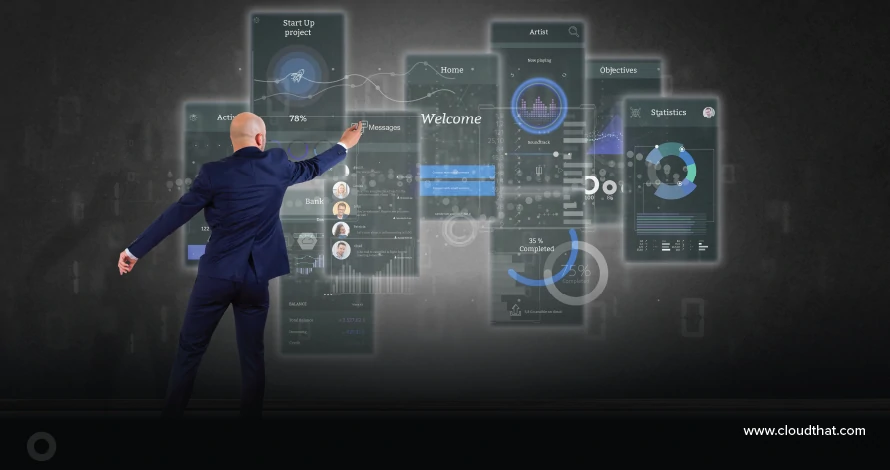|
Voiced by Amazon Polly |
In the evolving landscape of microservices and distributed architectures, managing how services discover and communicate with one another becomes increasingly important. AWS Cloud Map is a fully managed service that simplifies service discovery by allowing you to register your cloud resources with custom names. Instead of hardcoding endpoints or IP addresses, your applications can dynamically discover resources using logical service names. This enables resilience, scalability and consistency across AWS workloads.
Customized Cloud Solutions to Drive your Business Success
- Cloud Migration
- Devops
- AIML & IoT
AWS Cloud Map: An Overview
AWS Cloud Map enhances how services are discovered and managed within your environment. It lets you register any resource, such as Amazon ECS tasks, EC2 instances, S3 buckets or on-premises resources, with custom names that your applications can look up using DNS queries or AWS SDK APIs. This makes it a flexible alternative to traditional service discovery solutions, offering deep integration with AWS services such as Amazon ECS, Amazon EKS and AWS Lambda.
What Problems Does AWS Cloud Map Solve?
AWS Cloud Map addresses several challenges organizations face when managing dynamic infrastructures:
- Dynamic Service Discovery: Automatically registers and updates resources as infrastructure scales or changes.
- Centralized Registry: Maintains a single authoritative registry of all services and endpoints.
- Reduced Configuration Overhead: Eliminates manual endpoint management for microservices.
- Improved Observability: Works with Route 53 health checks and CloudWatch metrics for service monitoring.
Key Features of AWS Cloud Map
- Custom Namespace Management: Supports both public and private namespaces for flexible service discovery models.
- Health Checking: Integrates with Route 53 to automatically track and update service health.
- API-Driven Registration: Enables dynamic registration and deregistration of resources via AWS SDKs or APIs.
- Integration with AWS Services: Deep integration with ECS, EKS and Lambda for automatic registration and discovery.
- Metadata Support: Attach metadata and tags to services for enhanced visibility and automation.
How to Use AWS Cloud Map (via AWS Management Console)
- Create a Namespace: Navigate to the AWS Cloud Map console and choose whether to create a private or public namespace.
- Create a Service: Define a service within the namespace, configure DNS settings and set health check options.
- Register Resources: Register endpoints dynamically using APIs or automatically through ECS integration.
- Discover Services: Applications use the DiscoverInstances API or DNS queries to locate service endpoints.
Best Practices
- Implement Health Checks: Always enable Route 53 health checks for better fault tolerance.
- Use Meaningful Namespaces: Create descriptive namespaces to simplify resource identification.
- Enable CloudWatch Metrics: Monitor performance and service availability in real-time.
- Apply IAM Best Practices: Limit access permissions following the principle of least privilege.
- Integrate with ECS and EKS: Automate registration and discovery for containerized workloads.
AWS Cloud Map Benefits
AWS Cloud Map plays a critical role in modern architectures by offering a scalable and automated approach to service discovery and resource management. Whether you’re running containerized applications in ECS or serverless workloads with Lambda, Cloud Map simplifies communication between components while improving fault tolerance and flexibility. It empowers Developers and DevOps teams to focus on application logic instead of managing complex endpoint configurations.
Get your new hires billable within 1-60 days. Experience our Capability Development Framework today.
- Cloud Training
- Customized Training
- Experiential Learning
About CloudThat
CloudThat is an award-winning company and the first in India to offer cloud training and consulting services worldwide. As a Microsoft Solutions Partner, AWS Advanced Tier Training Partner, and Google Cloud Platform Partner, CloudThat has empowered over 850,000 professionals through 600+ cloud certifications winning global recognition for its training excellence including 20 MCT Trainers in Microsoft’s Global Top 100 and an impressive 12 awards in the last 8 years. CloudThat specializes in Cloud Migration, Data Platforms, DevOps, IoT, and cutting-edge technologies like Gen AI & AI/ML. It has delivered over 500 consulting projects for 250+ organizations in 30+ countries as it continues to empower professionals and enterprises to thrive in the digital-first world.
FAQs
1. Is AWS Cloud Map suitable for hybrid environments?
ANS: – Yes. You can register on-premises resources alongside cloud resources for unified service discovery.
2. How is AWS Cloud Map different from Route 53?
ANS: – While Route 53 offers DNS-based discovery, Cloud Map adds API-based discovery and metadata management capabilities.
3. Can I automate registration with ECS?
ANS: – Yes. When integrated with ECS, services and tasks are automatically registered and updated in AWS Cloud Map.

WRITTEN BY Abhijit Dilip Powar
Abhijit Dilip Powar is a Senior Vertical Head at CloudThat Technologies Private Limited, specializing in Cloud Architecting and Security. With 21 years of experience in industry and academics, he has trained over 10K professionals/students to upskill in Cloud Architecting and Security. Known for delivery skills customization as per the participants attending the trainings, he brings deep technical knowledge and practical application into every learning experience. Abhijit's passion for teaching reflects in his unique approach to learning and development.


 Login
Login


 November 19, 2025
November 19, 2025 PREV
PREV










Comments